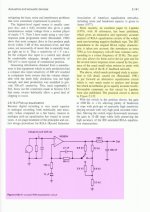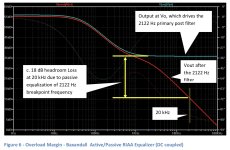AI will improve. Right now, if you want to create an ASIC, you write the code in VHDL and the compiler generates the hardware. The step from asking the computer in natural language to generate hardware is not that far away.
On a similar note, my eldest son is a head of digital at an agency that specialises in tools for the pharma industry. He came up with a server based game idea and asked ChatGPT4 to generate the code (I believe it was in Java) and he told me the sections he asked it to write code for worked perfectly.
It‘s still useless at audio though
On a similar note, my eldest son is a head of digital at an agency that specialises in tools for the pharma industry. He came up with a server based game idea and asked ChatGPT4 to generate the code (I believe it was in Java) and he told me the sections he asked it to write code for worked perfectly.
It‘s still useless at audio though
I really regret having deleted my ChatGPT history, as I can't show the examples. Last week, when I first discovered this thread, I was curious to learn more about the OP circuit and what ChatGPT could tell me about it. So, I took the time to provide the entire schematic, parts, and connections in verbatim. After that, ChatGPT easily explained the role of each stage, each part, impedances, currents, voltages, caveats, every other detail and the underlying logic. When I inquired whether the OP circuit could be considered accurate, it presented formulas and calculations, ultimately concluding that the circuit had low accuracy. In post #17, the Laplace transform was mentioned. So, I asked how it related to the circuit and if it could demonstrate the use of it. It did, and that's how I learned about the Neumann pole in just a few seconds. When asked if the circuit could be fine-tuned, it provided details and explanations as to why it would be difficult, if not impossible, and suggested that a better solution would involve using a passive filters between two stages or employing op-amp topologies as more modern solutions, echoing the experts in this thread. After more questions and explanations, it suggested that using LTSpice could be of great help. I don't know about you guys, but to me, this already seems like science fiction-level stuff, even though we're still in the early days of it. Beyond other domains, the implications for learning and education are going to be huge.
Last edited:
This (mooly’s) was the reply I was waiting for: looking good but not working. My very first question (to Chatgpt) was similar, albeit on a completely different topic: „what is slaked lime“, in german. The answer was nice to read but utter nonsense.
So, I think we should take it with a huge „grain“ of salt…
So, I think we should take it with a huge „grain“ of salt…
It’s just like many postings on DiyAudio 😂This (mooly’s) was the reply I was waiting for: looking good but not working. My very first question (to Chatgpt) was similar, albeit on a completely different topic: „what is slaked lime“, in german. The answer was nice to read but utter nonsense.
So, I think we should take it with a huge „grain“ of salt…
@myleftear I'll end up my part in this OT after this... but I asked GPT about your experience, and here's the answer (attached). I'm curious what's your take on "slaked lime"?
Attachments
Last edited:
Chatgpt knows where to learn from, but possibly not whatIt’s just like many postings on DiyAudio 😂
@Siberia ha! Smart move, and I must admit I made a mistake: I asked (in german) what lime putty, not slaked lime, is („sumpfkalk“), which is a different beast. Got trapped myself in the translation. The answer to slaked lime is good, the answer to „sumpfkalk“ is silly walk…)
Edit: shouldn’t that whole chatgpt thing be moved into its own thread?
Last edited:
And Wikipedia refers to Douglas Self.Self said exactly the same for the reasons you quote.
I get the feeling asking ChatGPT to for example summarise Boltzmann’s statistical mechanics in 500 words (I tried it) will give a result more accurate as adjudged by academics than ‘describe a high performance power amplifier design‘ as adjudged by people like us who have spent yrs fine tuning our ‘art’. Academic knowledge is easily accessible (but not easily understood perhaps) where’s accessing SOTA in niche subjects like amp design not so much. And then there’s the issue of nine ways to skin a cat which you don’t have to contend with in hard science subject.
a good one to try is ‘summarise Boltzmann’s statistical mechanics in Shakespeare’s writing style’ and in about 10 seconds it spits out a poem! You can also get it to tabulate a summary as well.
a good one to try is ‘summarise Boltzmann’s statistical mechanics in Shakespeare’s writing style’ and in about 10 seconds it spits out a poem! You can also get it to tabulate a summary as well.
I asked ChatGPT ‘describe the salient differences between VFA and CFA amplifiers’.
It got the VFA description 100% correct and the CFA 100% wrong.
Caveat Emptor.
Current feedback has at least three contradictory meanings. Maybe it used the original definition, series feedback at the output, or the second one, series feedback at the output and shunt feedback at the input?
Peter Baxandall achieved much better than 0.1dB from RIAA, along with with switched gains of 20, 30 and 40dB, using standard resistor values and two capacitors of 47n and 100n. Single opamp.
I simulated the thing, and confirmed the accuracy. I then confirmed that 1% tolerances for all the component values resulted in less than +/-0.1dB deviation from RIAA from 20Hz to 20kHz.
Alas the design is in the Journal of the Audio Engineering Society, and is still copywrite in spite of being a 1981 paper.
I simulated the thing, and confirmed the accuracy. I then confirmed that 1% tolerances for all the component values resulted in less than +/-0.1dB deviation from RIAA from 20Hz to 20kHz.
Alas the design is in the Journal of the Audio Engineering Society, and is still copywrite in spite of being a 1981 paper.
I understand Chat GPT gets the ball rolling, or gets one off the blank sheet of paper, moreso than provide an absolute, irrefutable truth. It's up to the user to drill down with it - challenge it when answers seem suspicious - to get the most out of it.
I wonder if it's becoming less trustworthy, after being exposed to its human interaction training? After all, some people must be attempting to train it in anti-truth. Why would anyone do that? Some people will do anything just because they can...
Was hoping it would be useful to condense videos, as it's such fashion to make a !#$^% video on some information one has, put it up on YT for "views" which is money, if you get enough of them. I for one hate sitting there watching something for 20 minutes, just to find what screws to take out where and in which order. Almost always skip-to -
It failed miserably on some, but not all. I presented a YT URL and it said it was an Avatar preview, which...it wasnt. Then I asked again and it apologized; said the URL was different this time from the last one I gave and...it wasnt. I didnt bother to correct it, as it was so ridiculous, I felt baited by the machine and stopped engaging right then and there.
I'm pretty sure that aspect of interacting with it is coming and it'll be subtle too. Imagine it has to be "tuned" though psychotic and sociopathic phases for it to finally become benign enough to deal with comfortably, by an ordinary human user unaware of it having a valence for deliberately messing around with someone.
I wonder if it's becoming less trustworthy, after being exposed to its human interaction training? After all, some people must be attempting to train it in anti-truth. Why would anyone do that? Some people will do anything just because they can...
Was hoping it would be useful to condense videos, as it's such fashion to make a !#$^% video on some information one has, put it up on YT for "views" which is money, if you get enough of them. I for one hate sitting there watching something for 20 minutes, just to find what screws to take out where and in which order. Almost always skip-to -
It failed miserably on some, but not all. I presented a YT URL and it said it was an Avatar preview, which...it wasnt. Then I asked again and it apologized; said the URL was different this time from the last one I gave and...it wasnt. I didnt bother to correct it, as it was so ridiculous, I felt baited by the machine and stopped engaging right then and there.
I'm pretty sure that aspect of interacting with it is coming and it'll be subtle too. Imagine it has to be "tuned" though psychotic and sociopathic phases for it to finally become benign enough to deal with comfortably, by an ordinary human user unaware of it having a valence for deliberately messing around with someone.
Peter Baxandall achieved much better than 0.1dB from RIAA, along with with switched gains of 20, 30 and 40dB, using standard resistor values and two capacitors of 47n and 100n. Single opamp.
I simulated the thing, and confirmed the accuracy. I then confirmed that 1% tolerances for all the component values resulted in less than +/-0.1dB deviation from RIAA from 20Hz to 20kHz.
Alas the design is in the Journal of the Audio Engineering Society, and is still copywrite in spite of being a 1981 paper.
https://pspatialaudio.com/phono_preamps.htm
Fair use.
Attachments
Last edited:
LOL. Best so far.Ignoring the irony in your comment for now.
It said a CFA is an amplifier was a current controlled output amplifier. Anyway, I pointed it to some academic literature and app notes on the subject so hopefully it will provide the correct answer in future.Current feedback has at least three contradictory meanings. Maybe it used the original definition, series feedback at the output, or the second one, series feedback at the output and shunt feedback at the input?
People confuse the output controlled quantity (voltage or current which both a VFA and a CFA can do) with the canonical feedback forms wherein the feedback can be in the form of a voltage (VFA) or a current (CFA).
Prof Sergio Franco wrote a lot of articles on this stuff over the yrs https://engineering.sfsu.edu/welcome-sergio-franco-home-webpage
But lets not open this can of worms again. The CFA vs VFA was with out a doubt the most divisive and bitter discussion ever held on this forum and it dragged on for about 2 yrs before the mods were forced to shut it down.
Last edited:
The problem with Baxandal‘s design is that it gives away 18 dB of headroom at 20kHz.
For low supply voltages like those in opamp circuits, it seems to me all active is the way to go, while for tube amps, passive is a good solution since you have more headroom (high supply voltages) and you can make the network impedance’s arbitrarily high to reduce loading (noise concerns notwithstanding).
Attachments
- Home
- Source & Line
- Analogue Source
- An RIAA phono preamp


